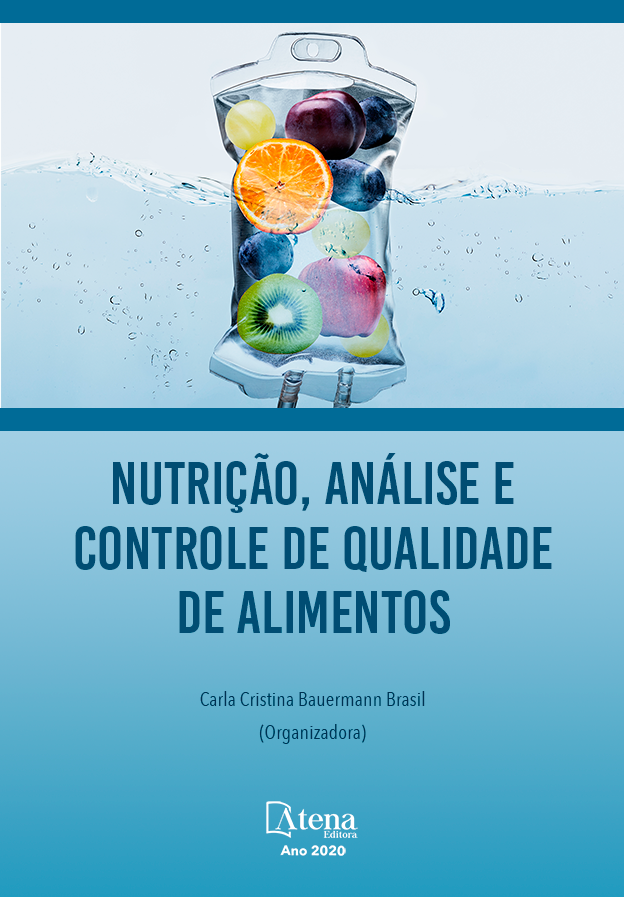
ANÁLISE DE CARDÁPIOS E AVALIAÇÃO ANTROPOMÉTRICA DE IDOSAS INSTITUCIONALIZADAS EM FORTALEZA-CE
Introdução: O Envelhecimento é caracterizado como um processo natural e inevitável onde ocorre progressivas alterações orgânicas e que resultam na diminuição da capacidade funcional dos indivíduos e podem ser influenciadas por diversos fatores, como biológicos, sociodemográficos e sociais, o que pode determinar algumas limitações tornando-o mais vulnerável e com menor qualidade de vida. Objetivo: avaliar o estado nutricional de idosas institucionalizadas, bem como a aceitação de cardápio e verificação dele quanto a composição nutricional. Metodologia: trata-se de um estudo descritivo com abordagem quantitativa, realizado em uma Instituição de Longa Permanecia para Idosos (ILPI), localizado na cidade de Fortaleza, no mês de abril de 2019. A amostra foi constituída por 20 idosas, institucionalizadas, com média de idade entre 61 anos e 92 anos. O estado nutricional foi avaliado a partir dos seguintes parâmetros: Índice de Massa Corporal (IMC), Circunferência do braço (CB), Circunferência da abdominal (CA), Circunferência da panturrilha (CP). E foi avaliado o cardápio de três dias aleatórios para verificar a composição nutricional quanto aos macronutrientes. Resultados: A avaliação do estado nutricional com base no IMC, mostrou que 9 (45%) das participantes, estavam com Excesso de peso, seguido de n=8 (40%) eutróficos, sendo ainda, pelo parâmetro de CB, n=14 (70%) estavam eutróficos, de acordo com a classificação. Mediante a CC verificou-se que n=16 (80%) apresentaram risco muito alto para doenças metabólicas e por meio da variável antropométrica CP foi possível observar que n=15 (75%) apresentaram valores adequados para a medida. Dentre os macronutrientes analisados, as proteínas apresentaram valores adequados diferentemente dos carboidratos e lipídios, que apresentaram valores inadequados. Conclusão: O excesso de peso no público idoso estudado, revelam dados preocupantes, que implicam a necessidade de estabelecer estratégias nutricionais que ofertem uma alimentação com distribuição adequada de macronutrientes.
ANÁLISE DE CARDÁPIOS E AVALIAÇÃO ANTROPOMÉTRICA DE IDOSAS INSTITUCIONALIZADAS EM FORTALEZA-CE
-
DOI: 10.22533/at.ed.91720271010
-
Palavras-chave: avaliação nutricional; antropometria; estado nutricional
-
Keywords: Nutritional Assessment; Anthropometry; Nutritional Status.
-
Abstract:
Introduction: Aging is characterized as a natural and inevitable process where progressive organic changes occur and result in decreased functional capacity of individuals and can be influenced by several factors, such as biological, sociodemographic and social, which may set some limitations, like make them more vulnerable and with lower quality of life. Objective: Evaluate the nutritional status of institutionalized elderly women and they acceptance of menu and verification of nutritional composition. Methodology: This is a descriptive study with a quantitative approach, carried out in a Long-Term Care (LTC) for seniors, placed in Fortaleza city in April 2019. The sample consisted of 20 institutionalized elderly women with age between 61 and 92 years. The nutritional status was evaluated from the following parameters: Body Mass Index (BMI), Arm Circumference (AC), Waist Circumference (WC) and Calf Circumference (CC). And to verify the intake of the macronutrients was evaluated the menu of random three days. Results: The BMI showed that 9 (45%) of the participants was with overweight, followed by 8 of them (40%) that was with eutrophy and the AC parameter showed that 14 (70%) was eutrophic, according to the classification. It was verified from WC that 16 (80%) presented a very high risk for metabolic diseases and through from CC it was possible to observe that 15 (75%) presented adequate values. Among the macronutrients analyzed, the proteins presented adequate values differently from the carbohydrates and lipids, which presented inadequate values. Conclusion: The overweight in the studied elderly population reveals worrying data, which accentuate the need to establish nutritional strategies to offer diets with adequate distribution of macronutrients.
-
Número de páginas: 15
- DIEGO SILVA MELO
- ISABELA LIMAVERDE GOMES
- KARLA PINHEIRO CAVALCANTE
- CLEIDIANE RODRIGUES DE SOUSA


